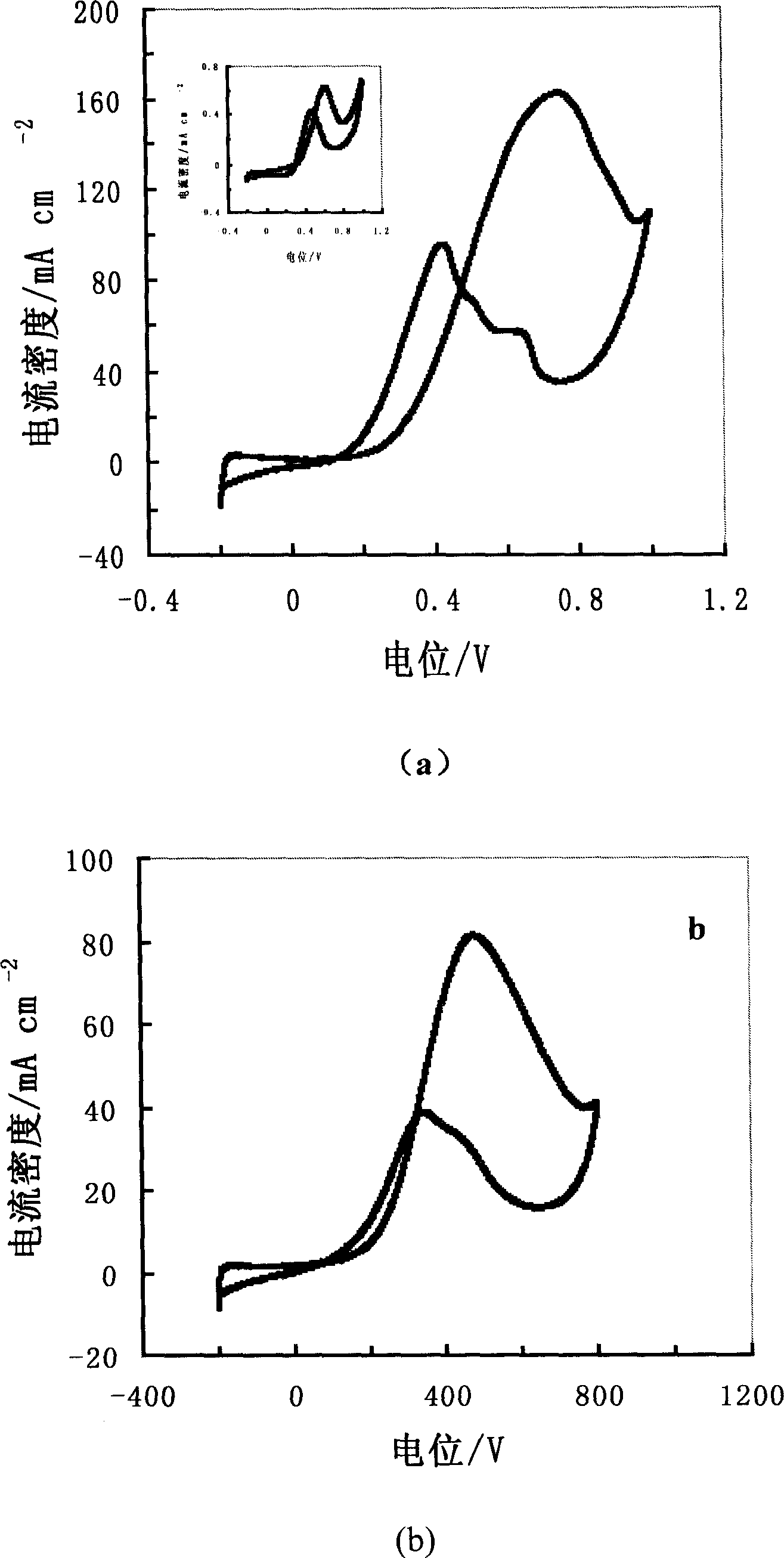Preparation method of nano catalyst for low-temp. fuel cell
A nano-catalyst and fuel cell technology, applied in battery electrodes, circuits, electrical components, etc., can solve the problems of long preparation time, inability to form alloys, and reduce the electrochemical activity of catalysts, and achieve the effect of increasing preparation time and uniform distribution.
- Summary
- Abstract
- Description
- Claims
- Application Information
AI Technical Summary
Problems solved by technology
Method used
Image
Examples
Embodiment 1
[0022] Get 0.5g of carbon black (Vulcan XC-72, produced by U.S. Cabot Company) and place it in a 100ml reactor, add 4ml of acetone solution, stir ultrasonically for 5 minutes, drip 25ml of chloroplatinic acid solution with a platinum content of 30mg / ml, and then ultrasonically Mix until the sample becomes a paste, add excess formic acid solution dropwise under ultrasonic stirring, and adjust the pH value to 9 with ammonia water. Then the beaker containing the pasty sample was transferred to a large glass container with a volume of 250ml using carbon black as a microwave sensitive material, and the above reactor was placed in a modified household microwave oven (frequency 2.45GHz, output power 850W). The intermittent microwave heating program is used to first induce the reduction of chloroplatinic acid to metal platinum, and the heating program is controlled as microwave heating for 15 seconds-stop for 40 seconds-heat for 10 seconds-stop for 60 seconds-heat for 10 seconds-stop f...
Embodiment 2
[0024] Get 0.5g carbon black (Vulcan XC-72, the U.S. Cabot Company produces) and place in 100ml reactor, add 4ml acetone solution, ultrasonically stir for 5 minutes, drop into platinum content and be the chloroplatinic acid solution 11.1ml of 30mg / ml, then Ultrasonic homogenization until the sample becomes a paste, the beaker containing the sample is transferred to a large glass container with a volume of 250ml using carbon black as a microwave sensitive material, and the above reactor is placed in a modified household microwave oven (frequency is 2.45GHz, The output power is 850W). The intermittent microwave heating program is used to first induce the conversion of chloroplatinic acid into a water-insoluble intermediate product, and the heating program is controlled as microwave heating for 15 seconds--stop for 40 seconds--heat for 10 seconds--stop for 60 seconds--heat for 10 seconds--stop 75 seconds-heating for 10 seconds-stop for 120 seconds. The reactor was removed, coole...
Embodiment 3
[0026] Take 0.5g of carbon black, add 4ml of acetone / water solution (acetone, water volume ratio: 1:5) and add 4.2ml of chloroplatinic acid aqueous solution with a platinum content of 30mg / ml and 12.5ml of a tungsten content of 10mg / ml under ultrasonic stirring. WO 3 Aqueous solution (prepared by reacting tungsten powder with excess hydrogen peroxide) to form a mixed solution. The operation method of microwave solidification and microwave-assisted reduction is the same as that of Example 1. Pt / WO with a loading of 40% and a platinum-tungsten atomic ratio of 1:1 3 / C Catalyst. XRD results show that tungsten trioxide exists in an amorphous state, and the particles of platinum are smaller than 4nm.
PUM
 Login to View More
Login to View More Abstract
Description
Claims
Application Information
 Login to View More
Login to View More - R&D Engineer
- R&D Manager
- IP Professional
- Industry Leading Data Capabilities
- Powerful AI technology
- Patent DNA Extraction
Browse by: Latest US Patents, China's latest patents, Technical Efficacy Thesaurus, Application Domain, Technology Topic, Popular Technical Reports.
© 2024 PatSnap. All rights reserved.Legal|Privacy policy|Modern Slavery Act Transparency Statement|Sitemap|About US| Contact US: help@patsnap.com










